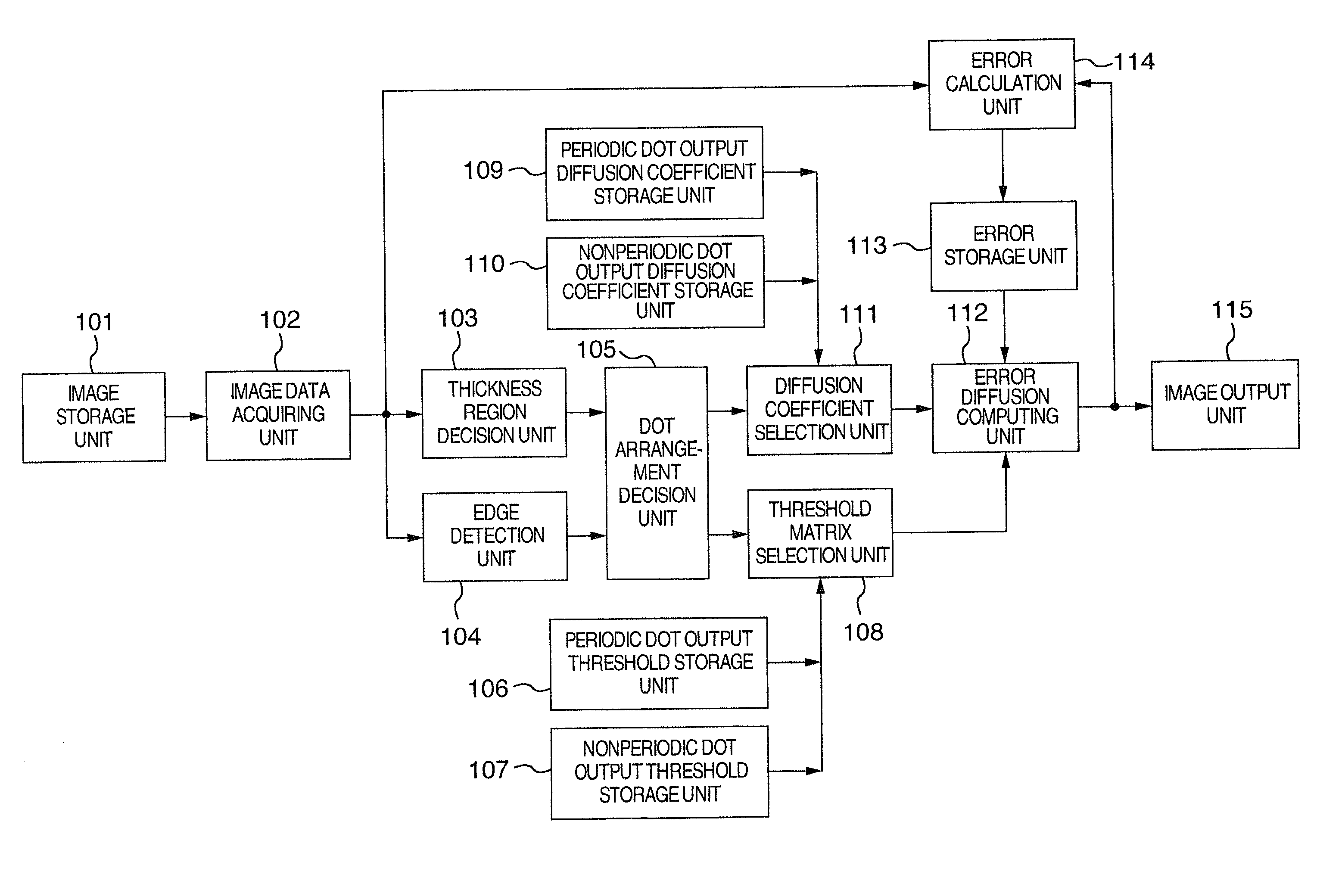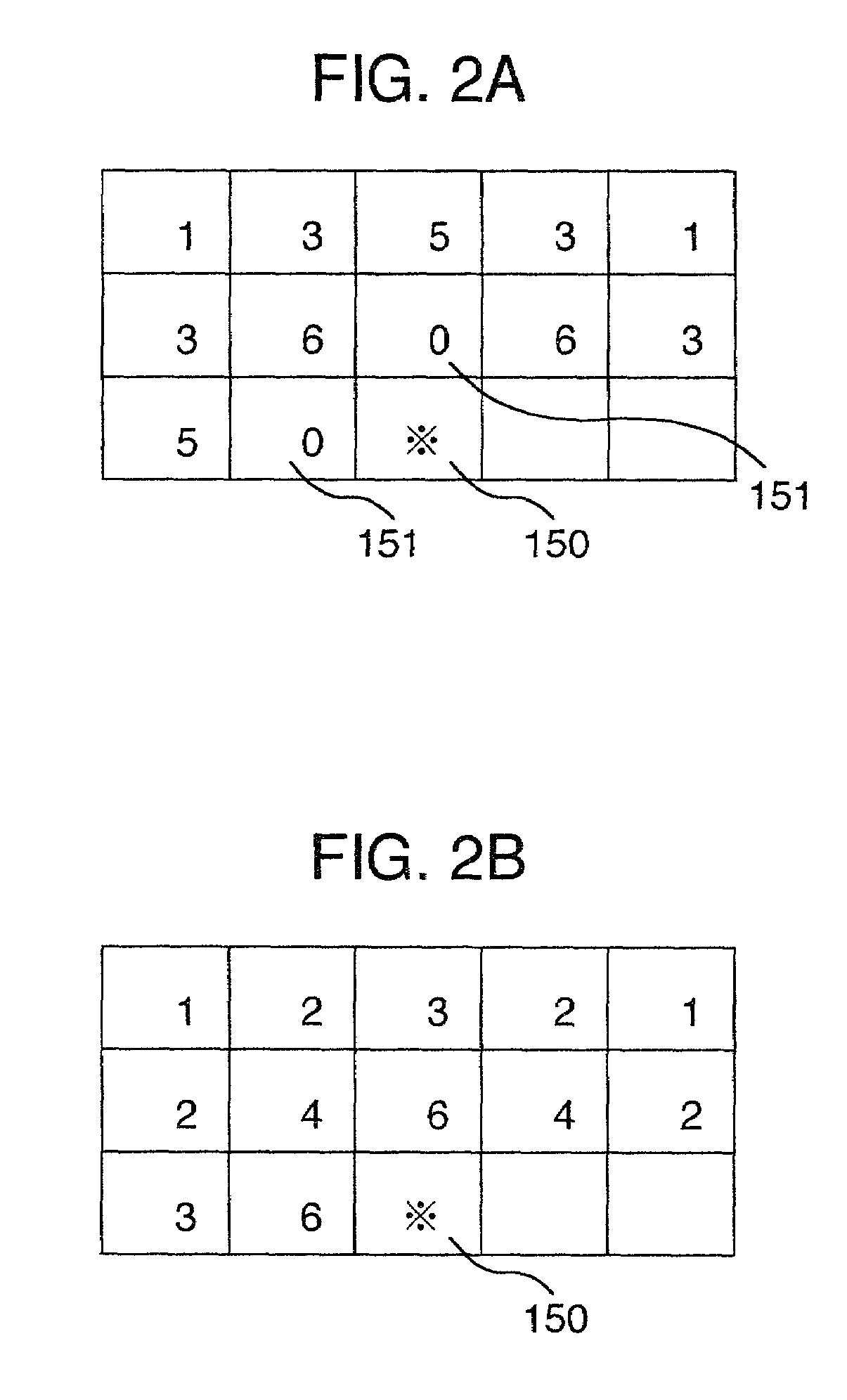Image processing method and apparatus
a processing method and image technology, applied in the field of quasi halftone processing of images, can solve the problems of difficult to reproduce the image with a satisfactory picture quality, graininess deterioration, and deterioration of the gradation property and picture quality of the binary image generated by the conventional dither method, and achieve the effects of accurate production of isolated dots, stably reproducing dots, and high-quality printing data
- Summary
- Abstract
- Description
- Claims
- Application Information
AI Technical Summary
Benefits of technology
Problems solved by technology
Method used
Image
Examples
Embodiment Construction
[0030]An embodiment of the invention will be described about the conversion of multi-tone image to binary data. FIG. 1 shows the construction of an image processing apparatus using an image processing method according to one embodiment of the invention.
[0031]Referring to FIG. 1, there is shown an image storage unit 101 for storing multi-valued image data to be processed. The pixel data of the image data within the image storage unit 101 is supplied pixel by pixel to an image data acquiring unit 102. The pixel data acquiring unit 102 acquires data of pixel units from the image data stored within the image storage unit 101, and supplies it to a thickness region decision unit 103 and to an edge detection unit 104. The thickness region decision unit 103 decides whether the pixel data acquired by the pixel data acquiring unit 102 is a low thickness region or an intermediate and high thickness region, and supplies the decision result to a dot arrangement decision unit 105. The edge detect...
PUM
 Login to View More
Login to View More Abstract
Description
Claims
Application Information
 Login to View More
Login to View More - R&D
- Intellectual Property
- Life Sciences
- Materials
- Tech Scout
- Unparalleled Data Quality
- Higher Quality Content
- 60% Fewer Hallucinations
Browse by: Latest US Patents, China's latest patents, Technical Efficacy Thesaurus, Application Domain, Technology Topic, Popular Technical Reports.
© 2025 PatSnap. All rights reserved.Legal|Privacy policy|Modern Slavery Act Transparency Statement|Sitemap|About US| Contact US: help@patsnap.com



